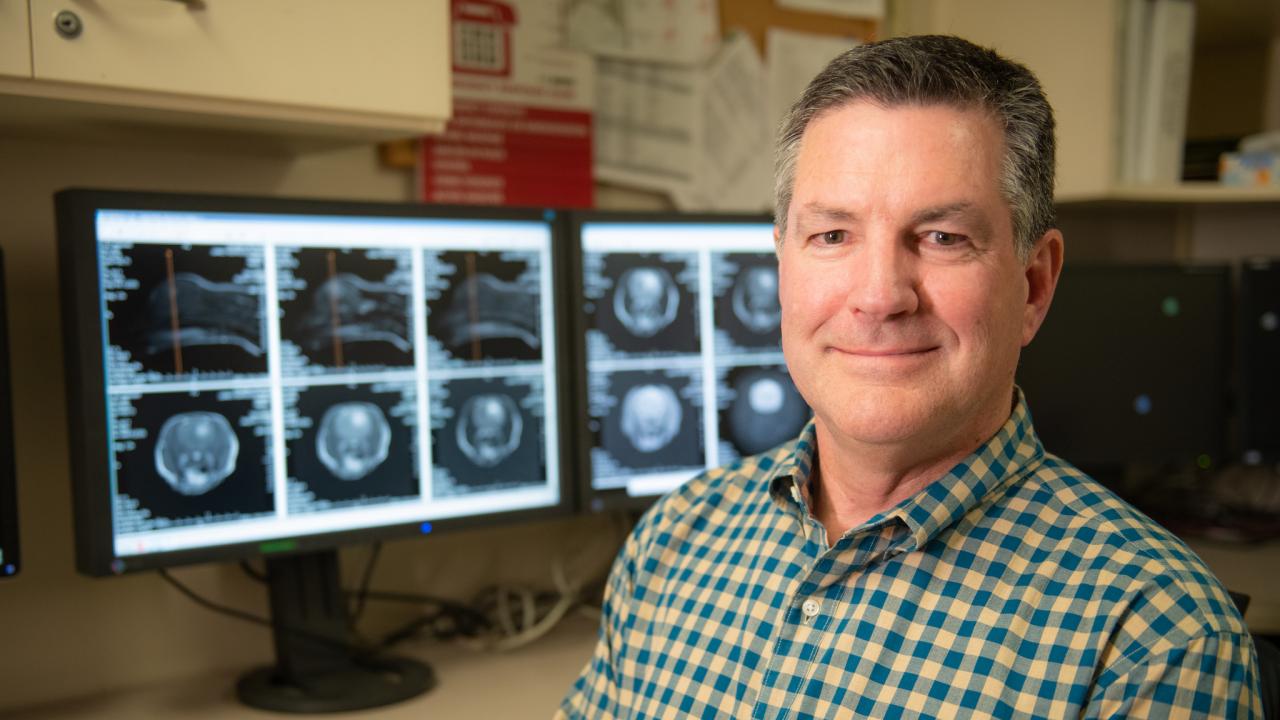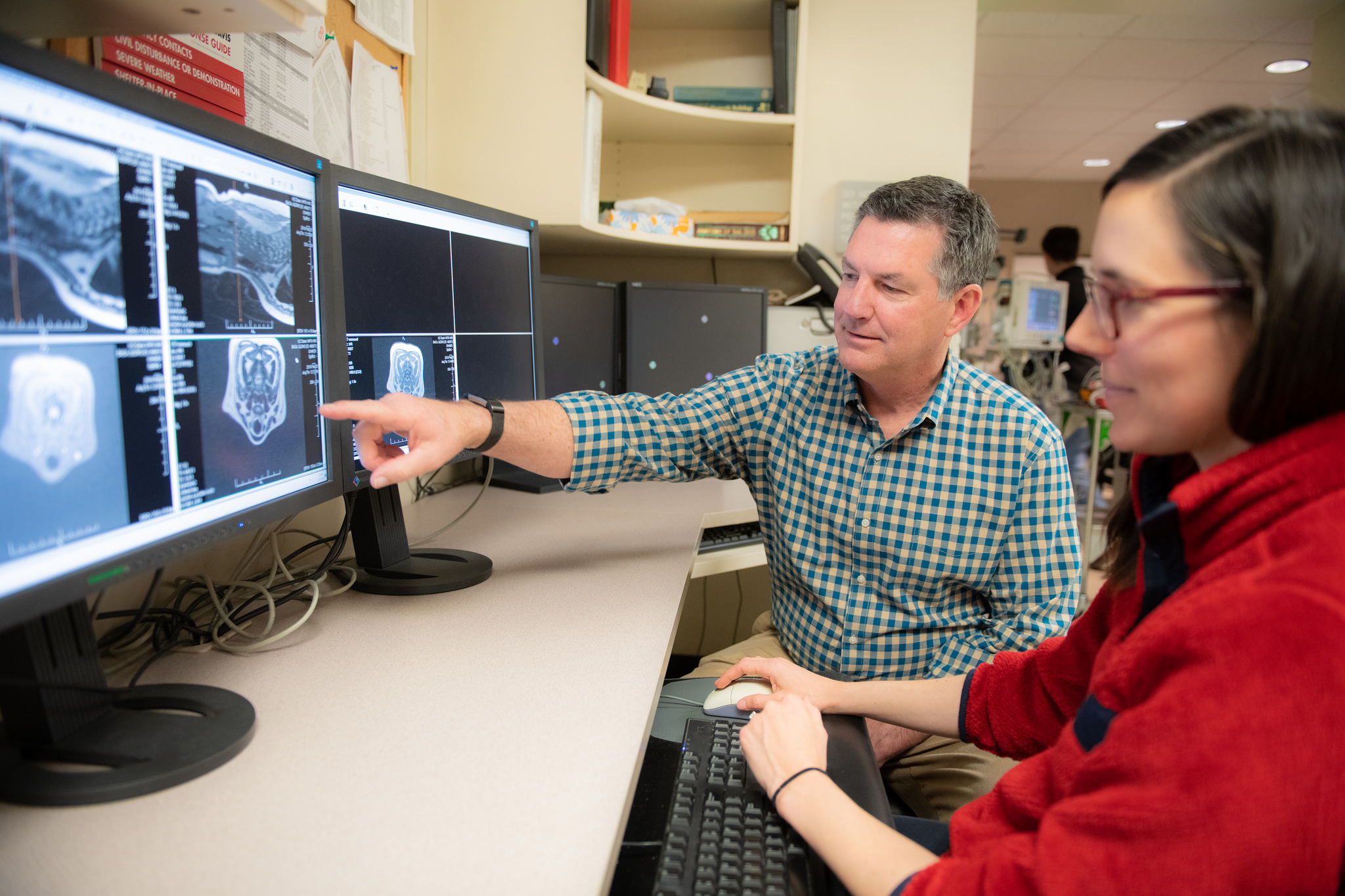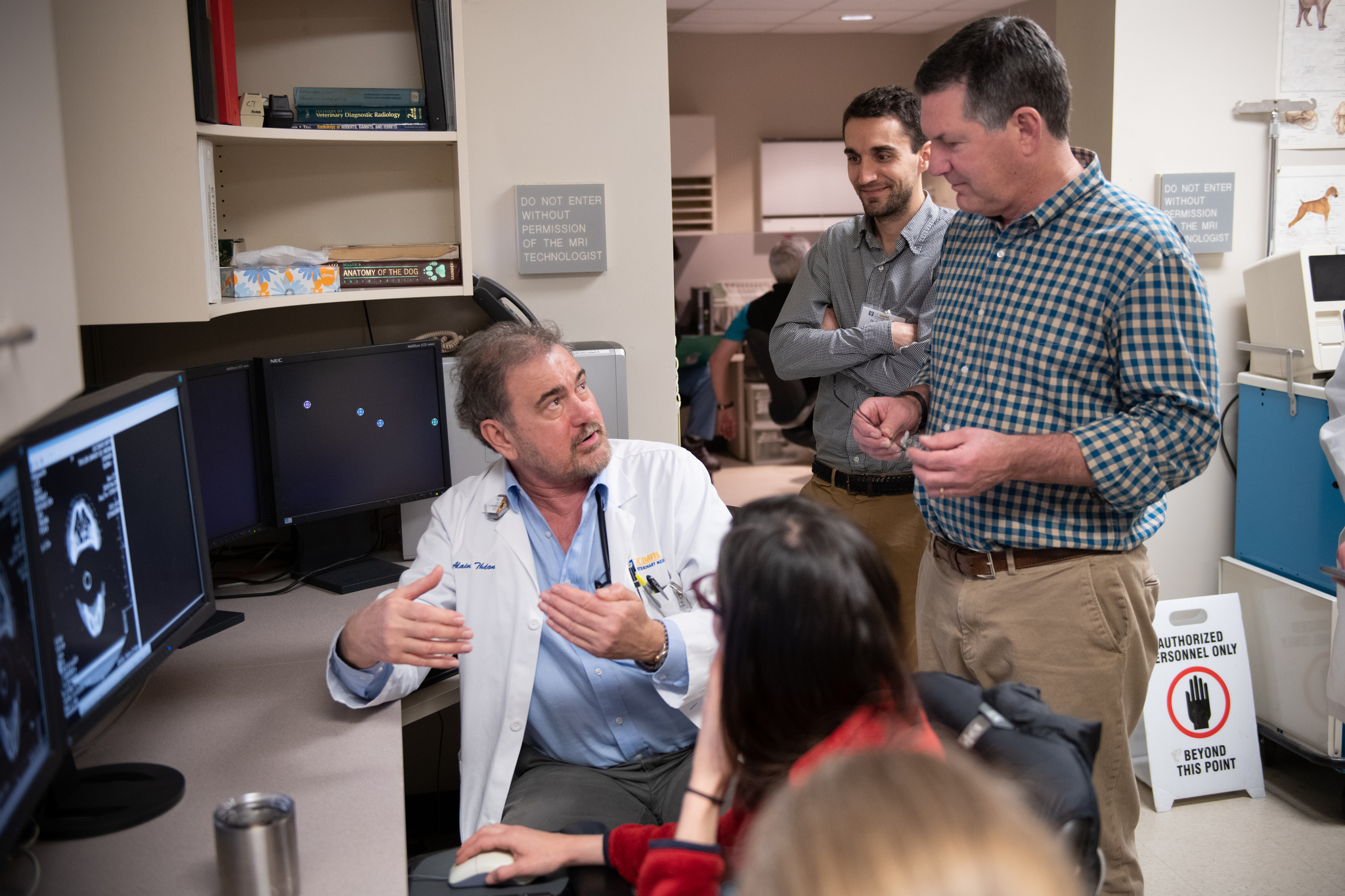
Faculty Profile - Dr. Erik Wisner
Faculty Profile - Dr. Erik Wisner
Dr. Erik Wisner is a faculty member in diagnostic imaging at the University of California, Davis. He is a world expert in CT and MRI imaging, and co-authored the textbook “Atlas of Small Animal CT and MRI”. Dr. Wisner is a popular and accomplished speaker and teacher, and has trained imaging residents from all over the world.
How did you become interested in veterinary radiology?

I was working in mixed practice at Loomis Basin Veterinary Clinic in the Sierra foothills in the mid-‘80s. UC Davis veterinary radiologist Dr. Bill Hornof would come up every few weeks and do an evening film reading session for local practitioners. That sparked my interest in radiology, and I eventually applied for the residency at Davis.
What are the most important functions of a veterinary radiologist?
In a large secondary/tertiary care academic hospital with a complex caseload, it’s important to engage with receiving service colleagues to establish an effective diagnostic plan before imaging studies are performed, and to accurately interpret and fully synthesize all of the resulting imaging data.
What does your typical day look like?
With the number of faculty we currently have on staff, we have the luxury of subspecializing. For the last few years I've limited my clinical activity primarily to the CT/MR service, with a bit of small and large animal radiology tossed in.
What makes academic practice rewarding?
Residents! Smart, inquisitive, enthusiastic, and energetic—what more could you ask for? They keep me on my toes!
What excites you most about research?
In addition to advancing standards of clinical care in veterinary medicine, we are often able to translate our findings to advance human medicine as well. A few years ago, the dean asked me to establish the Veterinary Center for Clinical Trials (https://clinicaltrials.vetmed.ucdavis.edu). I’ve served as the director for the past five years. We now typically have 60 to 80 clinical trials ongoing at any given time, and many of those are collaborative efforts between our SVM faculty and faculty from other units such as the medical school or the department of biomedical engineering. Some of these trials successfully inform and accelerate clinical studies in people.
What is the next challenge you would like to take on?
Dr. Allison Zwingenberger and I have been approached by the Wiley Publishing company to author a second edition of our Atlas of Small Animal CT & MRI. We've seen so many advances in those disciplines in the past five years that we are looking at a major revision and update of the original text.
What inspired you to write a textbook?
I saw a void in the existing CT and MR training resources a few years ago and we wanted to create a text targeted to diagnostic imaging residents and others with interest in CT and MR. The first edition is very image rich and was designed to be used "on the fly" in a clinical environment as a quick reference.

How do you see radiology changing in the next five years?
When I was a veterinary student one of my professors told me, "This ultrasound technology is academically interesting, but it will never be used in clinical practice because it's too expensive." Having seen the addition ultrasound, CT, MRI, and now PET/CT to the array of imaging technology we routinely apply, there is no doubt there are new technologies we haven't yet conceived that will be in common use in the future. Our challenge is to embrace and effectively exploit those new technologies as they emerge.
What quality do you feel best describes you?
Persistence.
What keeps you busy outside of work?
It's surprising how much time is freed up once children grow up, move out of the house, and establish their own lives. The void is filled with three adopted cats (one a burn victim from the 2015 Northern California wildfires) and a couple of agility dogs (my wife Gina’s hobby, not mine). I also now have time for the occasional round of golf and have taken up both acoustic and electric guitar. I have seven guitars at last count.
